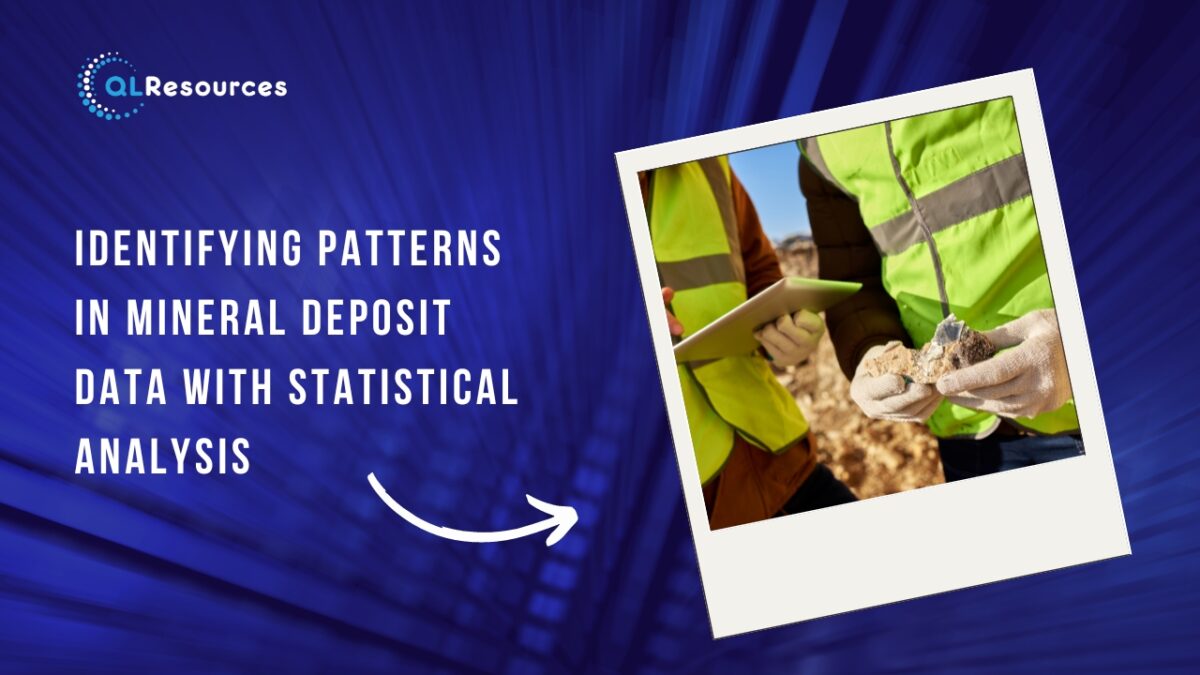Mining companies need to estimate the quantity and quality of minerals in a deposit to make informed decisions about where to focus their extraction efforts and how to optimise their operations. The process of mineral resource estimation involves analysing various data sets, including geological and geochemical data, to identify patterns in the mineral deposit. One way to identify these patterns is through statistical analysis, which involves applying mathematical and statistical techniques to the data. Here are some ways in which statistical analysis can be used to identify patterns in mineral deposit data:
1. Distribution Analysis
Distribution analysis is a statistical technique that involves analysing the distribution of mineral grades across a deposit. By analysing the distribution of grades, mining companies can identify areas of the deposit that have higher concentrations of valuable minerals. This can help mining companies target their extraction efforts in these areas to maximise the yield of the deposit.
2. Variography
Variography is a statistical technique that involves analysing the spatial correlation of mineral grades in the deposit. By analysing the spatial correlation, mining companies can identify areas of the deposit that have similar mineral grades. This can help mining companies create more accurate models of the deposit, which can be used to optimise extraction efforts.
3. Kriging
Kriging is a geostatistical technique that involves predicting the mineral grades at untested locations in the deposit based on the grades at nearby locations. Kriging can help mining companies create more accurate models of the deposit and estimate the quantity and quality of minerals in the deposit. This information can be used to optimise mining operations and increase the overall yield of the deposit.
4. Cluster Analysis
Cluster analysis is a statistical technique that involves grouping similar data points together based on their characteristics. Mining companies can use cluster analysis to group areas of the deposit that have similar mineral characteristics, such as grade and texture. This can help mining companies identify areas of the deposit that have higher concentrations of valuable minerals and optimise their extraction efforts accordingly.
5. Principal Component Analysis
Principal component analysis is a statistical technique that involves reducing the dimensionality of a data set by identifying the most important variables. Mining companies can use principal component analysis to identify the most important variables that contribute to the mineral grade and texture of the deposit. This information can be used to optimise extraction efforts and increase the overall yield of the deposit.
6. Regression Analysis
Regression analysis is a statistical technique that involves analysing the relationship between two or more variables. Mining companies can use regression analysis to identify the relationship between mineral grades and other variables, such as the geological characteristics of the deposit. This information can be used to optimise extraction efforts and increase the overall yield of the deposit.
7. Multivariate Analysis
Multivariate analysis is a statistical technique that involves analysing multiple variables simultaneously to identify patterns in the data. Mining companies can use multivariate analysis to identify the relationship between mineral grades, geological characteristics, and other variables. This information can be used to create more accurate models of the deposit and optimise extraction efforts.
In conclusion, statistical analysis is an essential tool for identifying patterns in mineral deposit data. By applying mathematical and statistical techniques to the data, mining companies can create more accurate models of the deposit and estimate the quantity and quality of minerals in the deposit. This information can be used to optimise mining operations, increase the efficiency of resource extraction, and improve the overall yield of the deposit. Furthermore, as the field of data analysis continues to evolve, new techniques and approaches are being developed that can further improve the accuracy and efficiency of mineral resource estimation in the mining industry.
